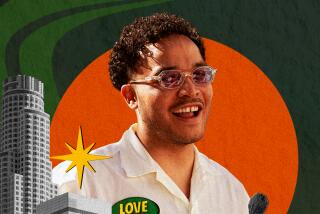They came to L.A. from Mexico for a better life. Now some are finding it — back in Mexico
Many years ago, Maria Elena Dueñas left her peasant town in the lush valley along Mexico’s Rio Ameca. She bid goodbye to her family, weeping over leaving her parents and siblings behind as she and her infant son followed her husband to Los Angeles.
She never forgot her father’s words, telling her to keep pushing forward, “sin voltear para atrás” — without looking back.
Home simply didn’t have much to offer — a place where dirt roads turned to mud in the rainy season, with no high school and few jobs other than blistering work in the fields of tobacco and corn.
Elena’s husband went north first, finding in a neglected neighborhood northeast of downtown L.A. a promised land of plentiful jobs, good salaries and cheap rents, a place filled with neighbors, family and friends from his village in Mexico.
The neighborhood was called Lincoln Heights.
These immigrants worked shifts in factories, restaurants and the produce market. They rented small apartments.
For generations, San Juan de Abajo, an agricultural town in the Pacific Coast state of Nayarit, funneled hundreds of people into Lincoln Heights on the faith that the Eastside neighborhood was a base camp for building a better life. The chain migration profoundly changed both places — and created economic, cultural and familial bonds that remain deep decades later. Former residents of the Mexican town still meet regularly at the McDonald’s on North Broadway to talk about old times.
But the fundamentals of this relationship between hometown and adopted home have changed.
Lincoln Heights, long a beacon for a better life, has lost some of its luster, with fewer jobs, rising rents and increasingly difficult border crossings.
At the same time, San Juan de Abajo has been transformed from a rural, backwater town into a more prosperous, modern place, powered by the booming tourist economy of nearby Puerto Vallarta. These changes have some immigrants reflecting on their choices.
That is where Elena now finds herself after 37 years in Lincoln Heights. Her children who grew up there found the success through education that eluded their parents. Her daughter graduated with a degree in child development from Cal State L.A. and her youngest son with one in management science and engineering from Stanford.
But for Elena and her husband, Santiago, home has remained, after all these years, a one-bedroom rental apartment. Even if they wanted to move into a house, the rising gentrification of Lincoln Heights has driven prices well beyond their means.
On her annual visits to San Juan de Abajo, though, Elena began to see surprising changes: paved streets, more streetlights and people moving into the town to work in tourism.
She longed to return. But her husband didn’t, and he reminded her of the grandchildren they would have to leave behind in America.
Although her husband’s view has prevailed, for now, a little yellow house on Victoria Anaya Tovar street waits for them back in San Juan de Abajo. Elena’s siblings already have their own homes; her sister Maria even put in a small pool in her backyard.
“I always say they’re doing better than we’re doing here,” Elena said. “My family lives better than we do.”
The Mexican village Elena visits is not the one she left. San Juan de Abajo’s population has nearly doubled in seven years, from about 9,000 people to an estimated 17,000.
But for all the changes, signs of the town’s deep ties to Lincoln Heights in Los Angeles are never far from view.
A dozen men arrive every weekday for the free breakfast and lunch served in a small home off the town’s main street that bears the message, painted in red, “Comedor Club Mi Querido San Juan USA” — my beloved San Juan USA club’s dining room.
For nearly five years, Ritma Garcia and her husband have run a food pantry from the house to feed the town’s senior citizens and residents with disabilities. The money that pays its rent, as well as the salary of the young woman who cooks, is raised by San Juanenses living in Lincoln Heights and other parts of Los Angeles.
But even as those in Lincoln Heights help feed the poor in their Mexican hometown, the signs of an improving economy here are evident.
Sixty years ago, when the main migration out of San Juan started, only the rich had cars. Most people walked, pedaled bikes or rode horses. Now cars fill the streets, jockeying with buses and motorbikes to get to jobs in hotels, restaurants, shops and casinos, many about an hour away in Puerto Vallarta.
For Elena the frequent trips from Lincoln Heights to San Juan are often spent with her sister Edelmira Vázquez Morales, who stayed in the village and has a life that makes Elena think about what could have been.
Early every morning, Vázquez rises to sell food from her home.
On a typical weekday, she’ll have chilaquiles, carne de res and albondigas ready for customers to pick up or eat there at her dining room table. She keeps an eye on the pots boiling on the stove while she chops tomatoes and onions for sopa de fideo, a popular noodle soup. A parrot named Botas, after a character in the Nickelodeon series “Dora the Explorer,” squawks relentlessly.
Most days, Vázquez makes between 700 and 800 pesos, or about $40 — not a lot, but enough.
The sisters married two brothers, who both made the trip north of the border to the place everyone here calls San Juan Chiquito, or Little San Juan, Lincoln Heights.
Vázquez’s husband, Jose Carlos Dueñas, arrived in Lincoln Heights in 1990 looking for a better life. Vázquez stayed behind in the village as her husband tried to plant roots in L.A. Carlos shared the one-bedroom apartment in Lincoln Heights with Elena and her husband. He found work at Marcelino’s Cafe on North Broadway, working 12 hours until midnight every day for $600 a week.
Carlos didn’t fall in love with L.A., though. After a year, he decided to go home.
“We’re happy here,” he said. He and Vázquez own a car and another house, which they rent out. This year, he will retire. “I don’t know if I could have lived over there like I do here.”
His youngest daughter, Jimena, agreed. She is studying to become a teacher.
“I’m in a field that’s growing,” she said. “I don’t have that American dream, because I found that here.”
Elena is still struggling with what her dream should be. By the time she arrived in 1980, when she was in her mid-20s, Lincoln Heights was already full of people who traced their roots to San Juan de Abajo.
The San Juanenses packed together in apartments at a building they called el castillo, the castle, or in basements or rooms of small homes. Most paid about $100 a month in rent. On Sundays, they celebrated their day off by gathering together in nearby Rose Hill Park, running footraces and cooking carne asada.
Elena and her husband, Santiago, had originally planned to return to San Juan. They were so sure they wanted to go back that when Elena became pregnant with her second child, she returned to Mexico so her daughter could be born there. But the dream faded.
They were putting down roots in Los Angeles without even noticing. Santiago moved from a factory making door handles in Lincoln Heights to a maintenance job for the Dodgers. Elena made money babysitting the children of others. They became legal residents through President Reagan’s amnesty program.
Elena returns to San Juan often, sometimes staying for months. There, she will sit on the patio of her yellow house, where she works on puzzles, unperturbed by the crowing roosters. Often, she finds herself traversing the town on foot.
She and her husband keep a closet of clothing there for whenever they’re in San Juan. A collage her siblings put together, including her children’s graduation photos, hangs on the wall — a gift for Elena’s 60th birthday.
The couple never bought a home in Lincoln Heights when they might have been able to afford it. Now, home prices have soared beyond their reach.
So in the afternoons, Elena sits in a plastic chair along Lincoln Park Avenue with her 1-year-old grandson. She doesn’t want him cooped up in the apartment.
Others from her hometown in Mexico also sit on the same street, preserving a tradition from back home.
There are two Elenas. There’s the one in Lincoln Heights, who does not want to be caged in her apartment and yet feels ill at ease outside of it.
And there’s the Elena in San Juan de Abajo, who comes alive — like a bird that puffs up to reveal many colors.
“There’s no other town like it,” she said. “I’m not missing anything here. I have my children, my husband, everything. But over there, I feel free.”
On a fall evening last year, she and Santiago watched Game 7 of the World Series in their apartment. The Dodgers were down 5-0, and her husband was losing hope of a comeback.
As it often does, talk turned to whether they might go back. They are at an impasse. Elena wants to go. Santiago wants to stay. He reminds her that she would miss their American grandchildren. Elena says she’s already raised her own children.
To her, the solution is obvious: “He’s going to stay. And I’ll go.”
Twitter: @brittny_mejia
More to Read
Sign up for Essential California
The most important California stories and recommendations in your inbox every morning.
You may occasionally receive promotional content from the Los Angeles Times.











